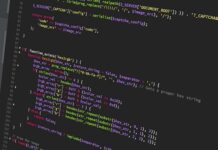Imagine being able to control your computer at a level most people only dream of. Imagine understanding the very core of your operating system, automating tasks, and solving problems with efficiency and precision. This is the world Linux opens up—and the right books can be your gateway. If you’ve ever wondered where to start your journey into Linux or how to level up your skills, this article will guide you through some of the best resources, backed by expertise and experience.
Why Learning Linux Matters
Linux is more than just an operating system; it’s the backbone of servers, cloud infrastructure, and supercomputers around the world. From web developers to data scientists, mastering Linux can significantly enhance your career opportunities. Unlike proprietary operating systems, Linux gives you transparency, flexibility, and control—qualities that can only be fully appreciated when you understand the system deeply.
But learning Linux can be intimidating. With thousands of commands, distributions, and tools, knowing where to start is crucial. Books written by experts in the field provide a structured approach, combining theory with hands-on exercises.
Check also comprehensive Linux and programming guides available on Dargslan.com
Best Books to Learn Linux
To help you navigate the sea of Linux resources, we’ve compiled a selection of books suitable for beginners, intermediate learners, and advanced users. Each of these books has been carefully chosen for its depth, clarity, and practical approach.
1. The Linux Command Line: A Complete Introduction by William Shotts
This book is a must-have for beginners. It introduces the command line, teaches essential commands, and explains the philosophy behind Linux. Shotts’ writing makes complex concepts approachable, making it perfect for someone new to Linux or coming from a Windows or macOS background.
2. Linux Bible by Christopher Negus
If you want a comprehensive resource, the Linux Bible is for you. Updated regularly, it covers major distributions, server configuration, system administration, and shell scripting. It’s ideal for learners who want a single reference that grows with them.
3. How Linux Works: What Every Superuser Should Know by Brian Ward
For those who want to go deeper, this book explains the inner workings of Linux. From processes to file systems, networking, and system calls, Ward’s expertise provides readers with an understanding of why Linux behaves the way it does.
4. UNIX and Linux System Administration Handbook by Evi Nemeth et al.
A classic in system administration, this handbook is trusted by professionals worldwide. It’s suitable for learners aiming to become Linux administrators, offering practical advice and detailed explanations of real-world scenarios.
5. Linux Pocket Guide by Daniel J. Barrett
Perfect for quick reference and practical usage, this guide is concise yet packed with valuable information. It’s great for users who prefer a portable, easy-to-digest resource while working on Linux systems.
Comparative Table of Recommended Linux Books
| Book Title | Best For | Key Strengths | Difficulty Level | Edition Updates |
|---|---|---|---|---|
| The Linux Command Line | Beginners | Clear explanations, command line basics, hands-on exercises | Easy | 2nd Edition |
| Linux Bible | All levels | Comprehensive, practical, covers multiple distributions | Medium | Regularly updated |
| How Linux Works | Intermediate | Deep understanding of Linux internals | Medium-Advanced | 2nd Edition |
| UNIX and Linux System Administration Handbook | Advanced | Professional system administration, real-world scenarios | Advanced | 5th Edition |
| Linux Pocket Guide | Beginners/Intermediate | Portable reference, concise explanations | Easy-Medium | 3rd Edition |
This table helps you match the right book to your learning goals and experience level. Whether you’re just starting or want to become a Linux guru, these resources provide structured learning paths.
Tips for Maximizing Learning from Books
Reading a book alone isn’t enough; Linux is best learned by doing. Here are some strategies to enhance your learning experience:
-
Practice daily: Set up a virtual machine or use a live Linux distribution to try commands and scripts as you read.
-
Take notes: Summarize important commands and concepts in your own words.
-
Experiment: Don’t be afraid to break things; Linux encourages experimentation, and mistakes are valuable lessons.
-
Join communities: Forums like Stack Exchange, Linux.org, and Reddit can provide additional explanations and real-world examples.
Conclusion
Learning Linux is a journey that can transform the way you interact with technology. The right books, combined with consistent practice and community engagement, can make this journey rewarding and even enjoyable. From beginner-friendly guides to advanced administration handbooks, the resources listed here provide reliable, authoritative, and practical knowledge.
By choosing one of these books and committing to hands-on practice, you’re not just learning an operating system—you’re gaining a skill that can empower you professionally and personally. So pick a book, fire up your Linux environment, and start exploring. The world of Linux is vast, and every command you master opens a new door to possibility.












